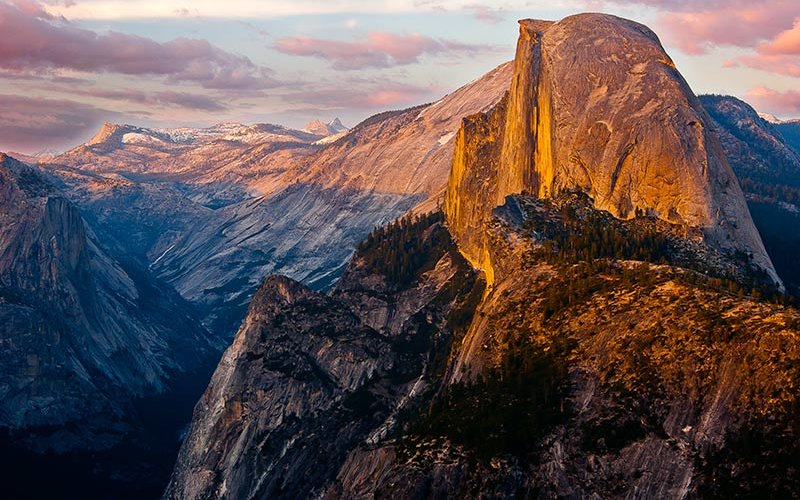
Geology students and their professor encountered black bears, thunderstorms and smoke from nearby wildfires. But that didn’t stop the Cal State Fullerton researchers from searching for clues about the nature of magma chambers of molten rock that caused ancient volcanic eruptions in Yosemite National Park.
Students had the chance to apply the geology knowledge they learned in the classroom out in the field, miles away from civilization with no cellphone reception, showers or fresh food for days.
Led by Vali Memeti, assistant professor of geological sciences, the faculty-student team spent several weeks in August backpacking deep into Yosemite’s wilderness, looking at rocks and retrieving samples for chemical analysis back in her campus lab.
Almost the entirety of Yosemite National Park is made of granodiorite or granite, a light-colored rock that once crystallized out of magma — the hot liquid rock deep inside the Earth from which igneous rock is formed by cooling. This happened during the Cretaceous Period about 95 to 85 million years ago, the same time dinosaurs roamed the world and volcanoes likely erupted within the Sierra Nevada mountain range, Memeti explained.
The famous monoliths of Half Dome and El Capitan in Yosemite Valley are both made of this type of rock, Memeti noted.
“Through our research, we’re studying minerals from Yosemite’s granite rocks to determine the size of the magma chambers and how the hot liquid rock is connected to the magma source deep beneath the surface of the Earth and volcanic eruptions at the surface,” Memeti said.
Graduate student Cullen Scheland is studying the age, structure and chemistry of granodiorite rocks from the Yosemite area, where he, Memeti and other students hiked 12 miles to Yosemite’s Lake Vernon to collect rock samples.
“I’m looking to better understand how fossilized magma chambers behaved beneath ancient volcanoes,” Scheland said. “Understanding the typical behaviors of magma systems can help us anticipate volcanic hazards and future eruptions.”
Memeti has been awarded two grants from the National Science Foundation to study Yosemite’s magma chambers with her students. One project — a collaboration with a colleague and students at Texas Tech University — focuses on the size of magma chambers by determining the chemistry of minerals grown in the ancient magma environment. CSUF graduate students Dustin Williams, Louis Oppenheim and Melissa Chambers are working on this project by studying different minerals.
The second project, in collaboration with a colleague and students at USC, is about understanding how over millions of years, the magma chamber systems in Yosemite became increasingly larger and likely contributed to catastrophic volcanic eruptions. Scheland, along with undergraduates John Ayers, Sabrina Green and Desiree Lucas, are doing their thesis projects on this topic. Additionally, in collaboration with Memeti’s projects, undergraduate Isabel Guinto is working with Natalie Bursztyn, CSUF assistant professor of geological sciences, to create an app that explains volcanic and glacial features in Yosemite to educate park visitors.
Scheland, who plans to pursue a doctorate and a career in academia, is fascinated with the research because magmas evolve chemically as they experience changes in pressure and temperature during their emplacement, giving them each their own unique characteristics.
“The field and lab methods I employ will help to unravel the history of the magma chambers in Yosemite,” he said. “So far, I’ve been able to ascertain that there was a chemical evolution across four different magma chambers. My next task to find out what could have induced the chemical changes.”